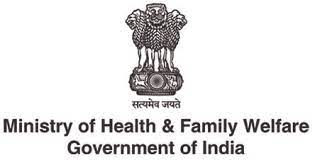Indigenously-developed molecular diagnostics have helped expand the reach of diagnosis to every part of the country today

While the COVID-19 pandemic impacted TB Programmes across the world, India was able to successfully offset the disruptions caused, through the introduction of critical interventions in 2020 and 2021 – this led to the National TB Elimination Programme notifying over 21.4 lakh TB cases, 18% higher than 2020.
The Ministry of Health and Family Welfare has taken note of the WHO Global TB Report 2022, and has clarified that India has, in fact, performed far better on major metrics as compared to other countries over time. India’s TB incidence for the year 2021 is 210 per 100,000 population – compared to the baseline year of 2015 (incidence was 256 per lakh of population in India); there has been an 18% decline which is 7 percentage points better than the global average of 11%. These figures also place India at the 36th position in terms of incidence rates (from largest to smallest incidence numbers).
This success can be attributed to an array of forward-looking measures implemented by the Programme through the years, such as the mandatory notification policy to ensure all cases are reported to the government. Further, intensified door-to-door Active Case Finding drives to screen patients and ensure no household is missed, has been a pillar of the Programme.
In 2021, over 22 crore people were screened for TB. The aim has been to find and detect more cases to arrest onward transmission of the disease in the community which has contributed to the decline in incidence. For this purpose, India has also scaled up diagnostic capability to strengthen detection efforts. Indigenously-developed molecular diagnostics have helped expand the reach of diagnosis to every part of the country today. India has over 4,760 molecular diagnostic machines across the country, reaching every district.
The WHO has also acknowledged the Health Ministry’s position on this and noted in the Report that “estimates of TB incidence and mortality in India for 2000–2021 are interim and subject to finalization, in consultation with India’s Ministry of Health & Family Welfare.
The results of the Health Ministry’s study, initiated by the Central TB Division (CTD), will be available in approximately six months’ time and shared further with WHO. These steps are in line with India conducting its own National Prevalence Survey to assess the true TB burden in the country – the world’s largest such survey ever conducted. The WHO Report notes that India is the only country to have completed such a survey in 2021, a year which saw “considerable recovery in India”.
The WHO Report also notes the crucial role of nutrition and under-nutrition as a contributory factor to the development of active TB disease. In this respect, the TB Programme’s nutrition support scheme – Ni-kshay Poshan Yojana – has proved critical for the vulnerable. During 2020 and 2021, India made cash transfers of Rs. 670 crore to TB patients through a Direct Benefit Transfer programme.
Moreover, in September 2022, the President of India launched a first-of-its-kind initiative, Pradhan Mantri TB Mukt Bharat Abhiyan to provide additional nutritional support to those on TB treatment, through contributions from community including individuals and organizations. Till date, 40,492 donors have come forward to support over 10,45,269 patients across the country.

Subscribe To Our Newsletter & Stay Updated